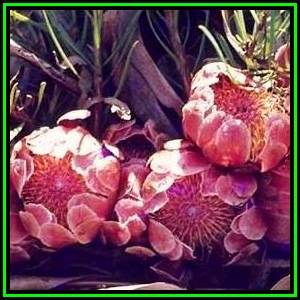
Protea decurrens - 10 Seed Pack - Indigenous Endemic Cut Flower Shrub Tree, New
Check my rate
| Main centres: | 1-3 business days |
| Regional areas: | 3-4 business days |
| Remote areas: | 3-5 business days |

| Main centres: | 1-3 business days |
| Regional areas: | 3-4 business days |
| Remote areas: | 3-5 business days |
Protea is both the botanical name and the English common name of a genus of South African flowering plants, sometimes also called sugarbushes in Eglish and Suikerbos in Afrikaans. The genus Protea was named after the Greek god Proteus, who could change his form at will, because plants within this genus have such a wide variety of forms. The Proteaceae family to which proteas belong is an ancient one. Its ancestors grew in Gondwana, 300 million years ago. Most protea occur south of the Limpopo River. 92% of the species occur only in the Cape Floristic Region, a narrow belt of mountainous coastal land from Clanwilliam to Grahamstown, South Africa. They are evergreen shrubs or trees usually found in fynbos. Protea blossoms make excellent cut flowers, keeping their colour for up to three weeks.
Protea decurrens commonly known as Linear-leaf Sugarbush is a South African endemic species. It grows in the Western Cape Province from Shaw's Pass to Langeberg Mountains. It is an erect shrub up to 50cm across and 60cm tall. The flowers have both sexes present. The Linear-leaf Sugarbush flowers from July to October and in its natural habitat they are pollinated by rats and mice. This Protea is not threatened but should be properly surveyed as it may be in danger of extinction. |